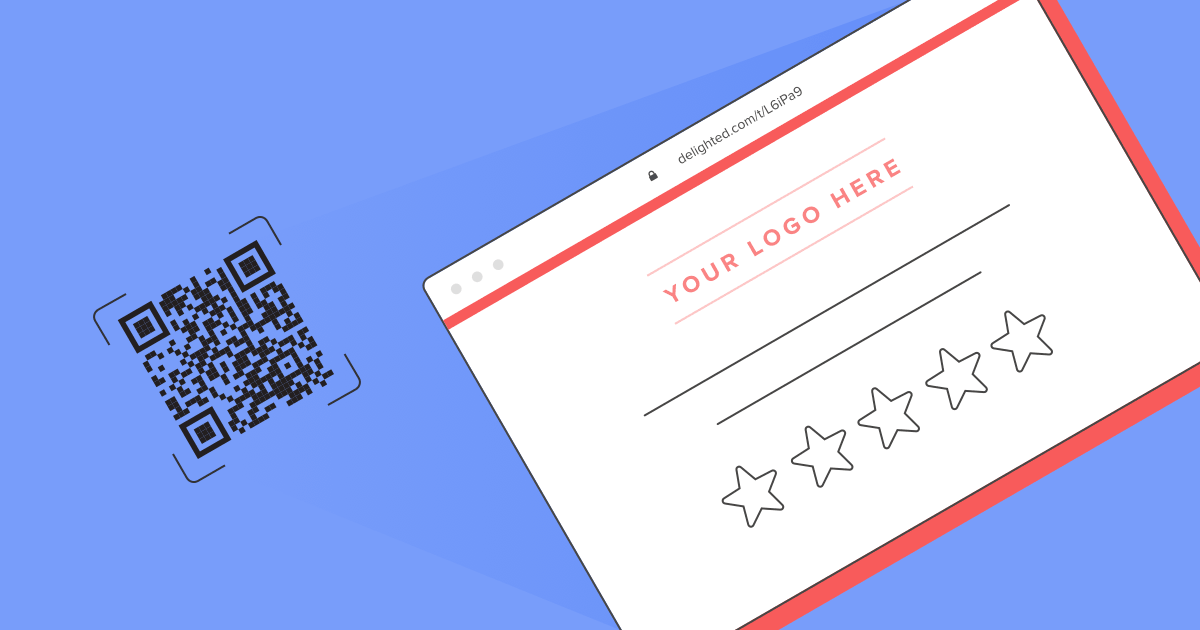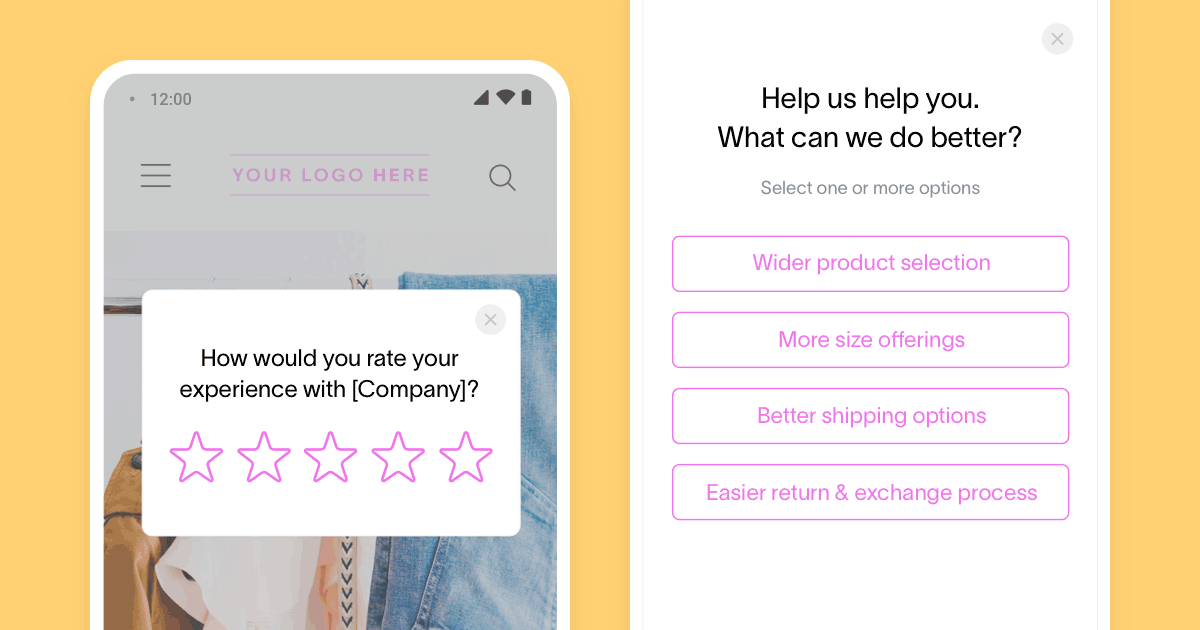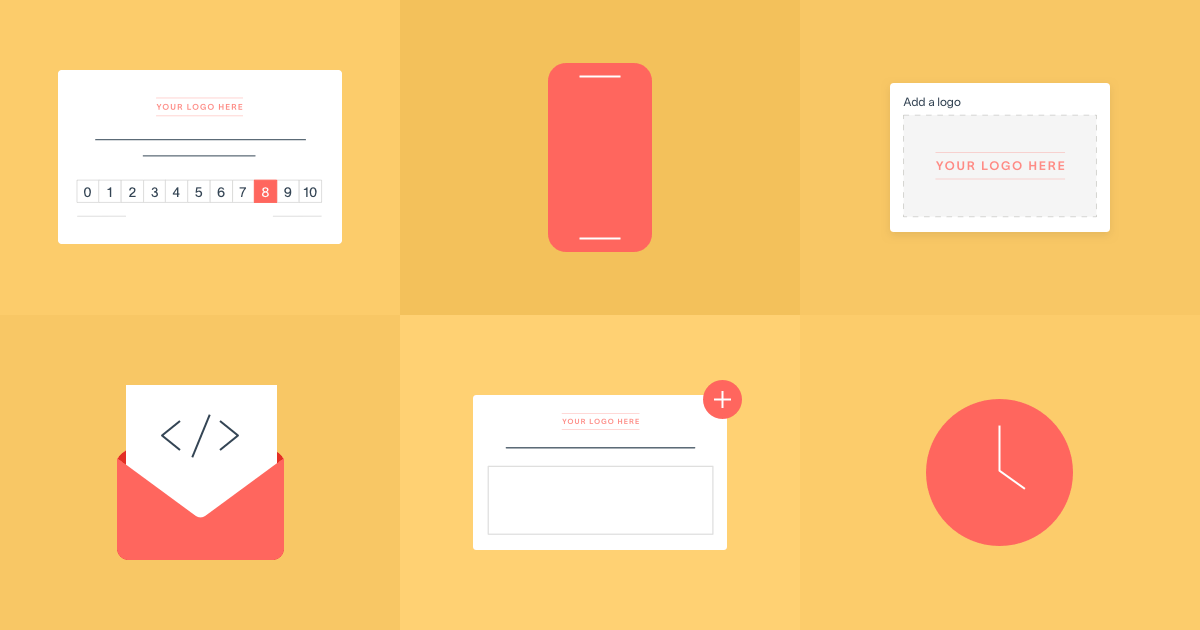Online survey distribution methods (think email, link, and website surveys) get great response rates and garner high-quality feedback for two reasons: they’re user-friendly and timed to catch folks while their experience is still fresh.
QR code surveys, available with our Link survey distribution method, extend those same benefits to feedback collection during real-world physical interactions. With QR code surveys, it’s easier than ever to get feedback on the go – all the respondent needs is a smartphone.
New to QR code surveys, or need a refresher? In this post, you’ll learn everything you need to know about QR code surveys, their benefits, when to use them, and how to create your own in 4 easy steps.
QR codes and their popularity
QR code stands for “quick response code.” You’ve probably seen them before – they’re the black and white square barcode commonly found on receipts, product packaging, or printed ads. Scanning one with your phone usually opens a web page or app.
QR codes are now more popular than ever, with most phone cameras – from iOS and Android devices – being smart enough to recognize QR codes without a QR code reader app.
Even though QR codes were invented in Japan in 1994 to track the manufacturing process, they’ve since been widely adopted for making payments, adding friends on social media, and distributing surveys.
With the advent of contactless COVID-safe experiences, QR codes have also seen explosive growth over the past couple of years, enabling people to order and pay for food without ever having to touch a physical menu. Creating a QR code has also gotten easier for businesses – many free QR code generators can turn any link into a QR code.
What is a QR code survey?
A QR code survey is a feedback collection method that allows users to scan a unique code with their smartphone to gain access to a survey. Not only are they easy to create, but they can be placed anywhere – physically and digitally – for customers to answer the survey anonymously.
Why create a QR code survey?
QR code surveys fill that niche for real-world feedback. After all, digital isn’t the only way for people to discover your business, and following up online after an in-person interaction may not even be possible if you don’t have access to personal contact information.
Here’s why QR codes make surveying easier for everyone:
They make gathering feedback a seamless process
QR codes make opening the survey – and gathering in-person feedback – a seamless process. Especially compared to the alternative: printing out link survey URLs, and counting on participants to type them into a browser.
They offer a contactless experience
COVID-19 heightened our awareness of all the surfaces we come in contact with and for many customers, contactless experiences are now non-negotiable. QR code surveys meet this customer need; one we don’t anticipate going away any time soon.
They don’t require participants to sign in
Respondents don’t have to register, sign in, or take an additional step in order to submit their survey feedback. They can simply scan the code with their mobile device, tap, and complete your survey – often in real time.
You can create them for free (with Delighted)
With our link surveys, you can generate a QR code survey for free.
When to use a QR code survey
When you use QR code surveys, you’re able to collect point-in-time feedback at customer touchpoints that are traditionally difficult to assess.
For example, you can post QR code surveys on banners at in-person conferences to gather insights on how the audience connected with the sessions (more on this below). Or, for post-purchase feedback, you can print your QR code survey directly on customer receipts.
Try scanning the QR code below to see what we mean:
Thank you for your purchase!
Scan the QR code with your phone camera to provide feedback on your experience.
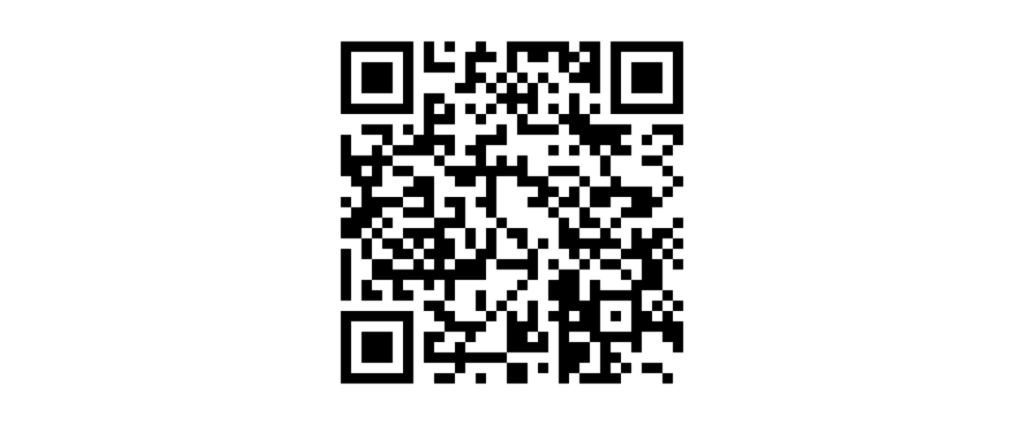
Survey link: https://delighted.com/t/mVkznW1o
Here is a full list of QR code survey use cases:
1. Product or service experience feedback
Since QR codes are so versatile, you can easily use them to gather feedback on experiences as they happen.
- Printed receipts: As mentioned above, you can add a QR code survey to the bottom of a receipt to kick off the purchase feedback process.
- Signage: Post QR code surveys on flyers or signs for people to scan as they leave your store or venue. For example, car washes can put a sign up at the end of the wash for customers to scan and provide feedback. Or, post the signs around your brick-and-mortar locations to get on-the-spot customer service feedback after in-store interactions.
- Menus: For restaurant owners, print a code on your menus to gather feedback on food selection or service.
- Assembly instructions: See in real time if customers are having a hard time assembling a product by adding a QR code to the manual. Folks won’t even need to contact customer support — if their experience is negative, you can have someone reach out to help.
- Product packaging: Include a QR code survey on your product packaging for more general product feedback.
2. Conference and event feedback
Imagine you’ve just finished a presentation at a conference and see mixed reactions from the crowd. What would be the best way to ask for feedback then and there?
While you could provide a link to your survey on a slide, the audience would still need to go through the trouble of typing that URL into a mobile browser. However, if you put a QR code survey in your presentation, all the audience has to do is open their phone camera and scan the code to access your survey.
You could also follow up on the presentation with an email survey, but the experience would no longer be fresh (and you would also need their emails).
Here are more ways to incorporate QR code surveys into an event:
- Presenter slides: Beyond capturing feedback on the presentation itself, QR code surveys can also add an interactive component during a presentation. For instance, if you’re presenting on customer service and want to grab the audience’s attention with data, kick off the presentation with: “On a scale of 1 to 5, how would you rate your last customer service experience?” Watch the feedback come in live on the Delighted iOS app and then recap the results before continuing the presentation.
- Printed banners: Increase the prominence of your feedback surveys by printing your QR code on conference banners and placing them throughout the venue.
3. Printed ad and marketing material feedback
Ads in the wild only capture attention for a moment. If you can’t ask for feedback right then and there, your chance to understand if your marketing material is resonating well with your customers vanishes.
Here are some common marketing materials for QR code surveys:
- Retail catalogs, brochures, and newsletters
- Flyers, posters, and ads in subway stations or at bus stops
4. Commercial space and facilities services feedback
Gather tenant feedback with QR code surveys displayed in prominent areas on the property, such as restrooms to monitor cleanliness, and outdoor spaces to gauge maintenance quality. The happier your tenants are, the less likely you’ll need to spend valuable time searching for occupants.
Now that we’ve covered some common use cases, let’s walk through how to create QR code surveys.
How to create a QR code survey
Like all other things Delighted, getting QR code feedback is easy. To create your QR code survey, all you have to do is:
Step 1. Choose your survey type
First, choose from any of our customer, employee, or product experience survey types: Net Promoter Score (NPS), Customer Satisfaction (CSAT), Customer Effort Score (CES), 5-star, Thumbs, Smileys, employee Net Promoter Score (eNPS), or Product/Market Fit (PMF). You can also add up to 10 customizable follow-up questions to the survey for more detailed feedback.
Step 2. Select the link survey distribution method
Once you’ve created your survey, select Link as your survey distribution method.
Step 3. Download your QR code
Now that your survey QR code is ready, you can download your QR code in either PNG or SVG format.
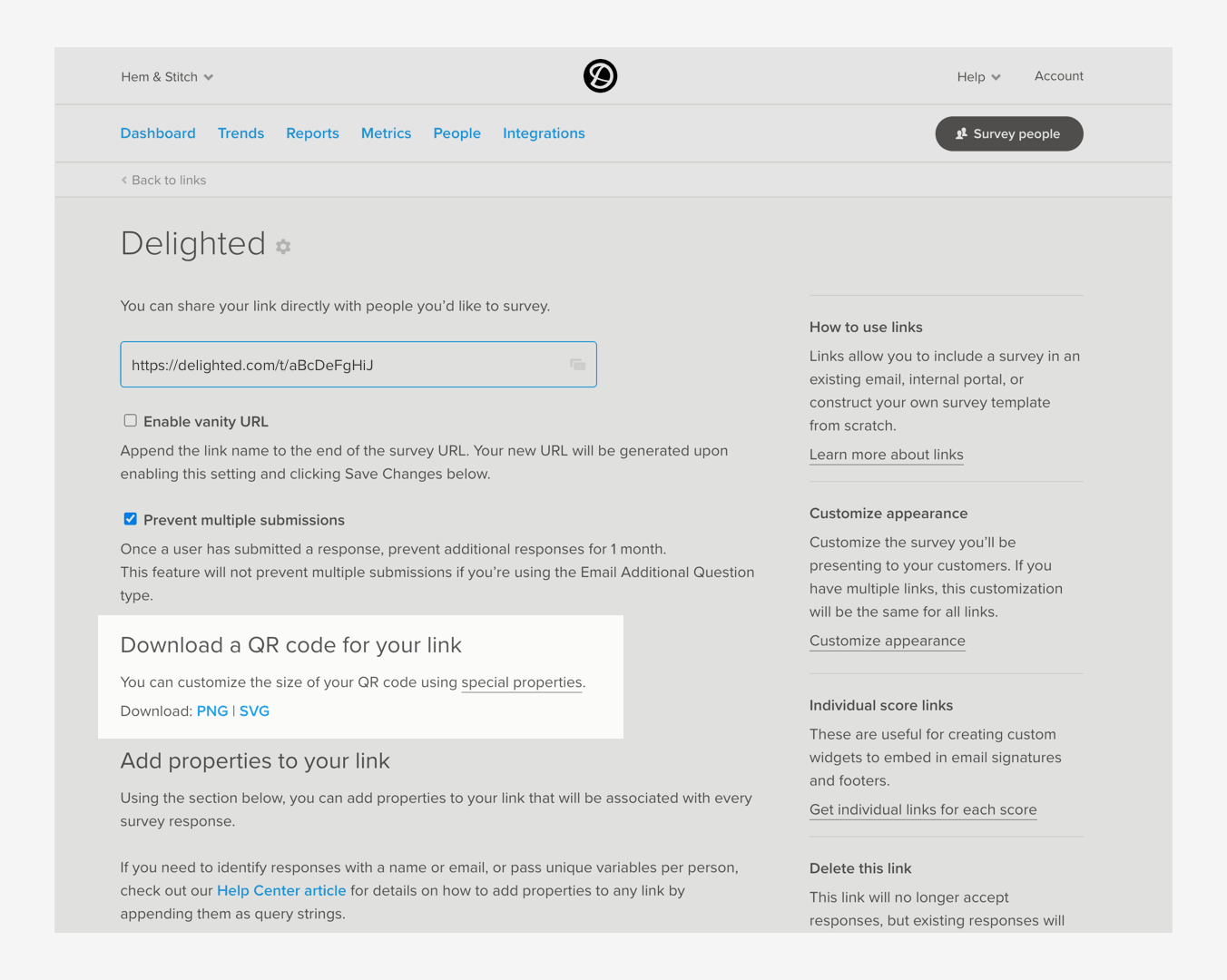
You can also associate properties to your QR code, so anyone who answers is automatically segmented for easy feedback analysis within your Delighted reports.
Step 4. Share your QR code survey
Add your QR code survey to printed marketing materials, receipts, print media, presentations, and more.
QR code survey best practices
As versatile as QR code surveys are, there are still a few best practices to follow:
Clearly state what scanning the QR code will do
Since QR codes have many applications, you’ll want to let your customers know that this particular code will take them to a survey. For example, you can say: “Scan this code with your phone camera to answer a 1-minute survey about your experience.”
Include a user-friendly link to the survey
If you’re worried about setting context, another way to prime folks for what to expect is to put the link version of the survey under the QR code image with readable URL text. This also ensures that people who aren’t familiar with QR codes can still provide feedback.
Use responsive formatting for your survey
Folks who scan the code will probably do so from a mobile device, so you’ll want to make sure your survey is as easy to understand and complete as possible. Follow these survey design best practices to create simple, yet impactful surveys that also avoid survey bias.
Test the QR code to make sure it works
With printed materials, ensure the QR code is rendered correctly and can be easily scanned. While the codes do account for a degree of distortion, an overly obscured or damaged QR code will not work correctly and could lead to a poor customer experience (e.g., a customer who is already dissatisfied with a product might be frustrated that a receipt QR code doesn’t work).
Ready to put your knowledge of QR code surveys to use? Create your first survey with Delighted’s customer experience solution and start building your experience management program today.



